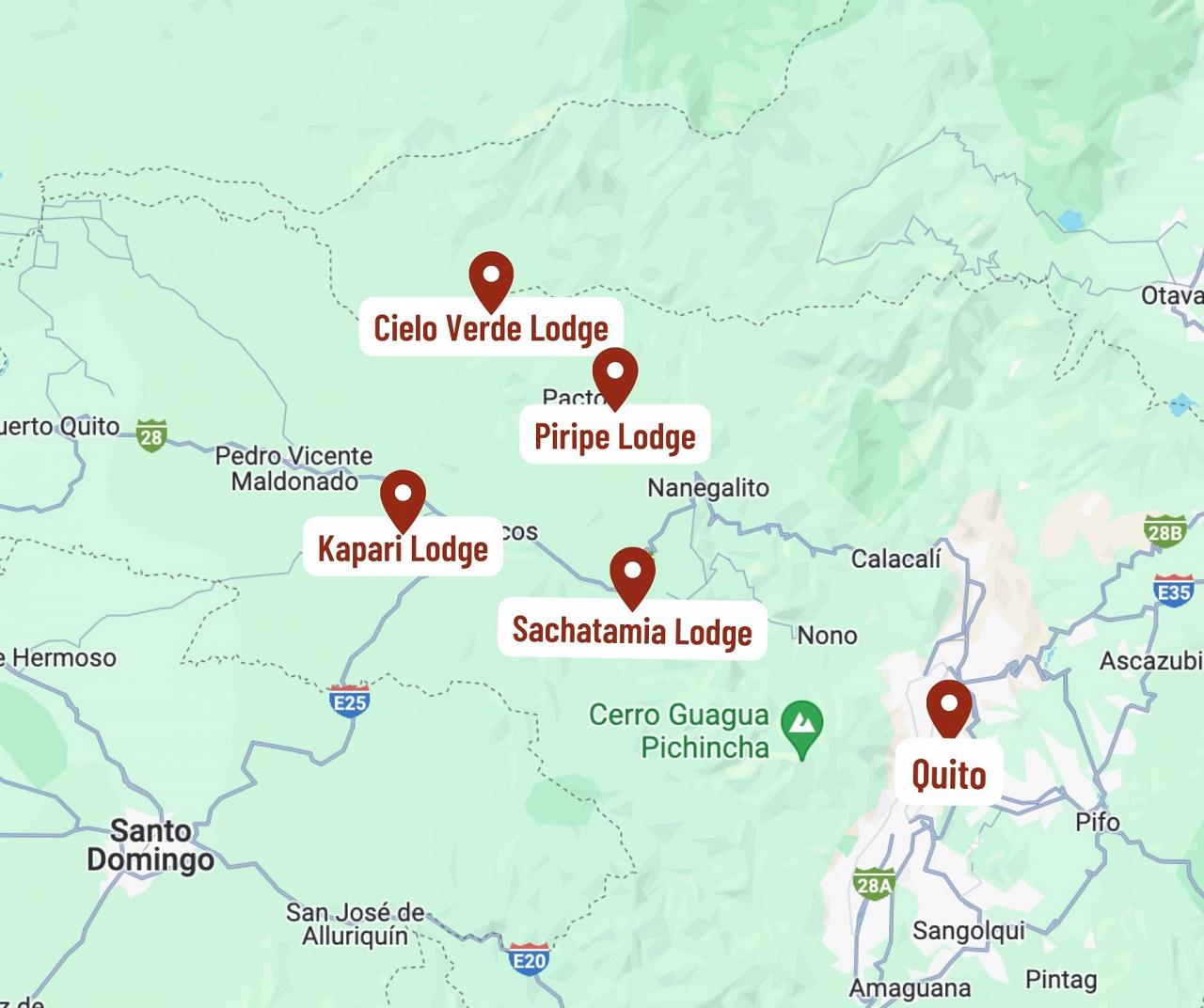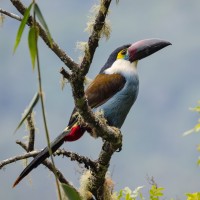- Overview
- Full Itinerary
- Photo Gallery
- Costing
- Travel Details
- Trip Reports
- Guide
- Map
- Know Before You Go
- Other Trips You May Like
This Northern Ecuador Chocó Cloud Forest Tour covers all the important birding sites found northwest of the capital city of Quito. This area is part of the Chocó bioregion that hosts a great number of endemics and specialities that are only shared with neighboring areas of Colombia to the north. We are based in comfortable and well-located lodges for which this part of Ecuador is renowned. These lodges are near first-class birding locations like Tandayapa and Mindo valleys, Amaguza and Mashpi Wuasi reserves, the Manduriacu River, and the lower Silanche area, affording us a wide spectrum of habitats to be explored. Birding in these reserves also gives us the opportunity to support local conservation projects for long-term habitat protection.
Starting with the mystical elfin forest of the temperate zone, followed by bird-rich subtropical cloud forests, we also venture deeper into tropical foothill forests to reach the mega-diverse lowlands. Iconic species include Andean Cock-of-the-rock, Giant Antpitta, Plate-billed Mountain and Chocó Toucans, Toucan Barbet, Club-winged Manakin, Glistening-green Tanager, Orange-breasted and Scaled Fruiteaters, Velvet-purple Coronet, Long-wattled Umbrellabird, and many more. We search for rarities like Black Solitaire and Indigo Flowerpiercer, too.
A great network of birding reserves, together with excellent lodges, mind-blowing scenery, and friendly people make Northwest Ecuador one of the planet’s most delightful birding destinations. Join us!
Tour Highlights
- Seek out the region’s 350 bird species, including Andean Cock-of-the-Rock, Long-wattled Umbrellabird, Golden-headed Quetzal, up to five species of antpittas, 45 species of hummingbirds, and tanagers galore
- Experience two critical ecoregions: the humid forest lowlands of the Chocó-Darien and the Northern Andean Mountain Forests
- Keep your eyes peeled for some of the 270 species of mammals of the region (including Spectacled Bear and Mantled Howler Monkey), 210 reptiles, and 130 amphibians
- Visit Mashpi Chocolate Farm
- Range in altitude from more than 9,000 feet to 1,200 feet and back again
- Support the Ecominga Foundation by visiting the Manduriacu Reserve
- Climb two observation towers for a bird’s eye view of the canopy
Trip Itinerary
Itineraries are guidelines; variations in itinerary may occur to account for weather, road conditions, closures, etc. and to maximize your experience.
Thurs., Oct. 2 Arrivals in Quito
Welcome to Quito! Arrivals today are at your leisure, though you may find that many flights arrive in the late evening. Therefore, we strongly advise that you arrive a night ahead (October 1) if you are able, so that you have plenty of time to rest or explore the city of Quito before our tour begins.
If you wish to explore around Quito, there is plenty to do! A visit to El Panecillo, a small volcanic hill located on the south side of Old Town, is worth it for the views of Quito and nearby volcanos on a clear day. Calle La Ronda, a cobbled pedestrian street in Old Town, is lined with galleries, traditional shops, and cafes. The Basilica del Voto Nacional is the largest neo-Gothic basilica in the Americas and one of many churches in Quito with stunning architecture. These sites and many others are a short taxi ride from the downtown area or walkable from the Old Town area. One of South America’s most attractive colonial capitals, Quito is nestled at the foot of the Pichincha Volcano. The vibrant city enjoys bright sunshine during this time of the year and, on a clear day, stunning views of towering Andean peaks. Quito means ‘Eternal Spring’ in the ancient language of Quechua, and we enjoy the comfortable climate here. Dinner tonight is at your leisure, so take time to settle and relax before our adventure begins tomorrow morning!
Accommodations at San Jose de Puembo Hotel
Fri., Oct. 3 Reserva Zuro Loma | Tandayapa & Alambi Valleys
We have an early start this morning to visit Zuro Loma, a small-scale independent reserve located on the slopes of the Pichincha Volcano. Situated in a temperate cloud forest, this reserve offers great opportunities to see the stunning Chestnut-naped Antpitta and the beautiful chestnut-brown Equatorial Antpitta. While Antpittas are known for their secretiveness, this is one of the best spots for these two species. We also have the chance to see the chunky looking Barred Fruiteater, myriad colorful tanagers, and a host of hummingbird species, including the spectacular Sword-billed Hummingbird, which has the longest bill compared to body size of any bird in the world.
Later, we bird the famous Tandayapa Valley, located at a lower elevation, and have lunch in Guaycapi or enjoy a picnic lunch. The valley is mystical and lush. Trees are festooned with bromeliads and orchids, and each tree we pass holds a world of its. The life blooming in this famous valley is so evident as we explore. In the afternoon, we drive through the Alambi Valley to the Piripe Lodge in Pacto, with birding stops along the way.
Located just below the cloud forest, Piripe Lodge is set on a hillside in a beautiful rainforest where you are sure to feel immersed in nature. Rooms are purposefully simple, bright, and clean and built with nature-immersion in mind. Misty morning views watching feeders over steaming coffee, we enjoy incredibly delicious Ecuadorian cuisine during our stay here.
Accommodations at Piripe Lodge (B,L,D)
Sat., Oct. 4 Piripe Area | Cock-of-the-rock Lek
We enjoy a full day birding around the Piripe area. Early in the morning, we visit the Andean Cock-of-the-rock lek at Santa Elena, where there is a large platform blind for us to view the birds better. One of the iconic birds of Ecuador, the Andean Cock-of-the-rock puts on a show at dawn, complete with squealing and grunting. You don’t want to miss this!
In the afternoon, we look for birds while we visit a traditional sugar cane family project. We learn about how sugar cane is harvested and processed to make panela, the unrefined cane sugar that is added to dishes and drinks throughout Latin and South America. There are many opportunities to bird in the surrounding areas and our guide picks the best options.
Accommodations at Piripe Lodge (B,L,D)
Sun., Oct. 5 Upper Mashpi Road | Amagusa Reserve
Today is a very special day as we enjoy our first exploration of the upper part of Mashpi Road and visit the incredible Amagusa-Mashpi Reserve. The reserve is owned by a local couple, Sergio and Doris, and they have put tremendous effort into making this a top-notch birding destination. It’s known for its incredible number of birds and 22 of the endemic Chocó species can be found here.
We depart Pacto after breakfast and head to Mashpi Road, an unpaved twisting road that winds its way up to the Chocó cloud forest. We make birding stops along the way and look for the rare Indigo Flowerpiercer, the brilliantly colored Glistening-green Tanager, and numerous hummingbirds including the beautiful Purple-bibbed Whitetip, the dazzling Velvet-purple Coronet, and many others. The nectar and plantain feeders in the Amagusa Reserve attract a wide range of species and we may see the unmistakable Flame-faced Tanager, Rose-cheeked Parrot, and Cinnamon Becard. If we’re very lucky, we may see Tamandua Anteater or Three-toed Sloth!
We enjoy lunch at Mashpi Wuasi while we watch the hummingbirds at the feeders. In the afternoon, we bird along the way to our lodge for the next two nights, Cielo Verde, surrounded by lush vegetation and adjacent to the Grande River.
Accommodations at Cielo Verde Lodge (B,L,D)
Mon., Oct. 6 Middle & Lower Mashpi Road
This morning, we head out early to bird the lower and middle parts of the Mashpi Road down to the lower elevations. We search for species such as the snowy white Black-tipped Cotinga, Ornate Hawk-Eagle, Baudo Guan, the rare Yellow-green Tanager, and White-capped Dipper. We enjoy a picnic lunch in the field and continue birding in the afternoon. We make a stop at a nearby reservoir to look for waterbirds before heading back to our lodge.
Accommodations at Cielo Verde Lodge (B,L,D)
Tues., Oct. 7 Mashpi River | Chocolate Farm
This morning, we pack up to head to our next lodge. We spend the full day exploring around the Mashpi River and the Mashpi Artisanal Chocolate Farm, a conservation project owned and operated by a local ornithologist. We learn about the process to make organic chocolate bars with a walk through the cocoa plantation. We end our tour the best way, with a chocolate tasting. In this lowland forest habitat we look for Chocó Toucan, Chocó Warbler, Orange-fronted Barbet, and the bright Blue-whiskered Tanager.
After a superb morning of birding and chocolate, we head to the Kapari Lodge, nestled amongst the forest with comfortable, modern accommodations and great birding on site. The lodge has a pool; if it’s warm enough, perhaps take a dip before dinner! Meals here are fresh and locally sourced.
Accommodations at Kapari Lodge (B,L,D)
Wed., Oct. 8 Mindo: Guide’s Choice
Mindo is one of the most popular areas in all of Ecuador for nature enthusiasts. It’s a mountain town, and our lodge offers great bird and butterfly watching, as well as wonderful meals, and a cozy fireplace to gather around in the evenings. It is nestled in the valley of the Rio Mindo, a remarkable locale, home to over 360 species of birds. The ridges, slopes, and steep ravines to the north, west, and east of the village are cloaked in pre-montane cloud forest with a dense understory that includes Guadua bamboo. Much of the land around the village has been cleared for pasture, but small patches of secondary growth remain.
An option today may be to drive up to Bellavista Cloud Forest Reserve, a private 1,000-acre nature reserve that encompasses a mix of primary and secondary forest. The botanical wonder here is something to behold! One of the top birding locations in Ecuador, the reserve is known for its diverse hummingbird species (at feeders for close-ups), as well as a colorful array of toucans and tanagers. At 5,000–7,000 feet we encounter spectacular cloud forest on the steep slopes above us. Here we may find a number of bird species with limited range, including the Tanager Finch.
The forest and gardens are draped with orchids and bromeliads, and butterflies abound. Some of the most beautiful birds of the forest include the Plate-billed Mountain Toucan, Toucan Barbet, Golden Tanager, and Flame-faced Tanager. Lunch and the choice of hiking or birding fill our afternoon at Bella Vista.
We also hope to visit the lower elevation reserves at Milpe Reserve, where we hope to find a number of Chocó Region endemic birds. Some of these display fascinating social behavior. We hope to see White-bearded and Club-winged Manakins on their leks, while other species include Maroon-tailed Parakeet, Tri-colored Brush Finch, Purple-throated Fruitcrow, and others.
On past trips we’ve had great luck finding mixed flocks of tanagers that include Glistening-green, Rufous-throated, Golden-hooded, Moss-backed, and Ochre-breasted members of this colorful clan. The organization and behavior of members of the mixed flock has attracted a great deal of research in the Neotropics, which we discuss.
Accommodations at Kapari Lodge (B,L,D)
Thurs., Oct. 9 Long-wattled Umbrellabird | Sachamatia Lodge
We have an early start this morning to visit one of the best locations in the area to see the incredible male Long-wattled Umbrellabird. This unique bird, which can be difficult to find, puts on a spectacular display that is fascinating to watch. Other birds in this area that we search for include Choco Trogon and Club-winged Manakin. Depending on how the morning goes, we may stay at the Umbrellabird location or head back to the lodge to explore the lower part of the reserve.
Later in the afternoon, we head to the renowned Sachatamia Lodge. We settle into our comfortable rooms and enjoy a delicious dinner at the lodge. Keep an eye out for Violet-tailed Sylph, Empress Brilliant, Tawny-bellied Hermit, Green-fronted Lancebill, Purple-throated Woodstar, White-bellied Woodstar, Green-crowned Woodnymph, Brown and White-collared Incas, Western Emerald, and more at feeders surrounding the dining area.
A hint to be most comfortable here: Bring easy-to-slip-off shoes, as you go in and out of the lodge in search of birds. (Ecuadorian custom is to remove shoes to protect their beautiful wooden floors!)
Accommodations at Sachamatia Lodge (B,L,D)
Fri., Oct. 10 Rio Silanche | Canopy Tower
This morning, awaken to the sound of birds in this beautiful forest surrounding the lodge. Today we visit the Rio Silanche Bird Sanctuary, which is in a lowland Chocó rainforest around 1,100 feet in elevation. This is a great area for birding as the wide trails offer easy walking and there is a 50-foot-tall canopy tower that allows us to look for foraging flocks high in the trees. We spend the full day here looking for species such as the beautiful Scarlet-breasted Dacnis and the striking Scarlet-thighed Dacnis. We also keep our eyes peeled for a variety of tanagers including Blue-whiskered, Rufous-winged, Golden-hooded, and Scarlet-browed. The Chocó endemic Dusky Pigeon is a regular here as is Pale-mandible Araçari, Chocó and Yellow-throated Toucans, and White-tailed and Blue-tailed Trogons. We enjoy a picnic lunch in the field to maximize our time with these wonderful birds.
Accommodations at Sachatamia Lodge (B,L,D)
Sat., Oct. 11 Refugio Paz de las Aves | Antpitta Farm | Departures
It’s time to say goodbye today, but not before a visit to the famous Antpitta Farm Refugio Pas de las Aves. Once a farm, the owners have switched the land use to conservation and birding and it’s a great spot to see several species of elusive Antpitta including Yellow-breasted, Giant, Moustached, Ochre-breasted, and Chesnut-crowned, as well as Andean Cock-of-the-rock. We spend the rest of the morning searching for Toucan Barbet, Golden-headed Quetzal, and Scaled Fruiteater, along with many colorful tanagers and hummingbirds. Meet the family, walk the trails, and learn the story of how they started in conservation and make close acquaintances with these species a highlight of the tour.
We head back to the lodge for lunch and then pack up and return to Quito for our flights home. (B,L)
Cost of the Journey
Cost of the tour, from Quito, Ecuador, is per person based on occupancy: $4990 DBL / $5390 SGL.
Tour price includes: 9 nights accommodations, professional guide services, land transportation within Ecuador, park and reserve entrance fees, pre-departure information and services, miscellaneous program expenses, accommodation and meals at all lodges, private transport, and private bilingual bird/naturalist guide.
Cost of the tour does not include: your international flights to Quito, items of a personal nature such as beverages from the bar, porterage, laundry, phone calls, or gift items. We also recommend a gratuity for maid service, and for our local drivers and guides, which is left to your discretion.
Travel Details
Please plan to make air travel plans only after the minimum group size has been met. We will send you a confirmation email as soon as the trip has been confirmed.
Arrival and Departure Airport: Mariscal Sucre International Airport (UIO), Quito Ecuador
Arrival Details: You may arrive on October 2 at your leisure, however, please be advised that many USA flights arrive in the late evening, and we strongly recommend that you plan to arrive one night early so that you have plenty of time to rest or enjoy the city if you wish.
Departure Details: Plan flights to depart October 11 after 8:00 PM
After lunch at the lodge, we have a 2 hour drive to the Mariscal Sucre International Airport (UIO) in Quito. Most flights leave Quito around midnight so please check the flight dates carefully.
Travel Tip: If you would like to arrive early, you can book an early night at a convenient airport hotel, we recommend: Holiday Inn Quito Airport Wyndham Quito Airport and transfer you to our first night hotel the following day. If you want a location with birding, we recommend our first night hotel, if available, the San Jose de Puembo Hotel, a small bed and breakfast about 20 minutes away. If you wish to explore around Quito, there is plenty to do! A visit to El Panecillo, a small volcanic hill located on the south side of Old Town, is worth it for the views of Quito and nearby volcanos on a clear day. Calle La Ronda, a cobbled pedestrian street in Old Town, is lined with galleries, traditional shops, and cafes. The Basilica del Voto Nacional is the largest neo-Gothic basilica in the Americas and one of many churches in Quito with stunning architecture. These sites and many others are a short taxi ride from the downtown area or walkable from the Old Town area.
Entry Requirements: See "Essential Information" section under the "Know Before You Go" tab.
Browse below for trip reports and species lists from past versions of this and other tours from this destination.
Ecuador
- November 2017
- November 2018
- November 2019
- November 2022
- January 2023
- November 2023 (Birds & Mammals)
- December 2023 (Christmas Tour)
- March 2024
- November 2024 (Birds & Mammals)
- December 2024 (Christmas Tour)
- March 2025
-
Peg Abbott

Peg Abbott is the owner and lead guide of Naturalist Journeys, LLC. She has been designing, guiding, and organizing natural history tours for more than 25 years, working for the National Audubon Society and other organizations before launching Naturalist Journeys, LLC in 1998. Her work has taken her from Alaska to Africa and Argentina, as well as many other locations around the world. She has conducted research on several bird and mammal species and keeps a close interest in Yellowstone and Mexican wolf reintroduction projects. Her interests include all aspects of natural history and geology. After 20 years in and around the Yellowstone area, Peg relocated in 2003 to the birding mecca of Portal, AZ.
Photo credit: Carol Simon
Other trips with Peg Abbott
-
 Island of Wonder: Birds & Nature of Sri Lanka FULL - See our March departure!November 10 - 22, 2025, w/Mannar Island extension
Island of Wonder: Birds & Nature of Sri Lanka FULL - See our March departure!November 10 - 22, 2025, w/Mannar Island extension -
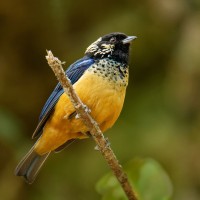 NEW! New Year at Tranquilo Bay FULL - See our Christmas Week at Trinidad's Asa Wright Nature Centre!December 30, 2025 - January 7, 2026, w/Mt. Totumas extension
NEW! New Year at Tranquilo Bay FULL - See our Christmas Week at Trinidad's Asa Wright Nature Centre!December 30, 2025 - January 7, 2026, w/Mt. Totumas extension -
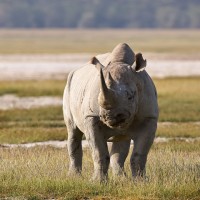 Tanzania: Wildlife & Birding Safari FULL - Ask us to put you on the list for 2027.February 9 - 22, 2026, w/Amboseli & Nairobi National Parks extension
Tanzania: Wildlife & Birding Safari FULL - Ask us to put you on the list for 2027.February 9 - 22, 2026, w/Amboseli & Nairobi National Parks extension -
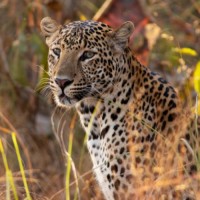 Big Cats & Breathtaking Birds of India FULL - Check out Island of Wonder: Birds & Nature of Sri Lanka!March 9 - 26, 2026, w/Pallas's Cat extension
Big Cats & Breathtaking Birds of India FULL - Check out Island of Wonder: Birds & Nature of Sri Lanka!March 9 - 26, 2026, w/Pallas's Cat extension -
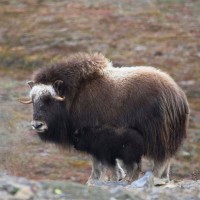 Nome Sweet Nome! Only two rooms left!May 28 - June 4, 2026
Nome Sweet Nome! Only two rooms left!May 28 - June 4, 2026 -
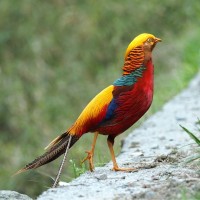 China’s Sichuan Basin & Tibetan Plateau FULL - Check out Thailand: Birding & Nature!June 11 - 26, 2026
China’s Sichuan Basin & Tibetan Plateau FULL - Check out Thailand: Birding & Nature!June 11 - 26, 2026 -
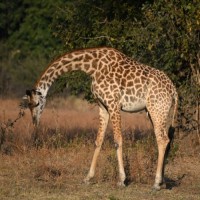 In-Depth & Incredible Africa: Botswana & ZambiaJuly 9 - 27, 2026
In-Depth & Incredible Africa: Botswana & ZambiaJuly 9 - 27, 2026 -
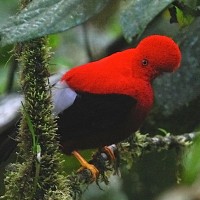 Peru: Cusco to Manú National Park A private tour for Tucson Bird Alliance.October 2 - 17, 2026, w/Machu Picchu extension
Peru: Cusco to Manú National Park A private tour for Tucson Bird Alliance.October 2 - 17, 2026, w/Machu Picchu extension -
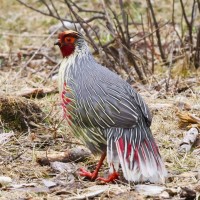 Biodiverse Bhutan: Birds, Mammals & BeyondNovember 6 - 21, 2026, w/Panna Tiger Reserve extension
Biodiverse Bhutan: Birds, Mammals & BeyondNovember 6 - 21, 2026, w/Panna Tiger Reserve extension -
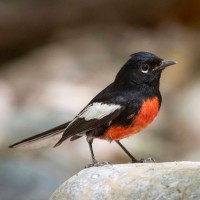 Arizona: New Year’s Birding Blitz December 29, 2026 - January 4, 2027
Arizona: New Year’s Birding Blitz December 29, 2026 - January 4, 2027
-
Essential Information +
Pace & Protocols +
Packing List +
Suggested Reading List +
Useful Links +
Photo credits: Banners: Quito Scenic (NJ Stock), Crimson-rumped Toucanet (NJ Stock), Spectacled Bear (NJ Stock), Hoatzin (NJ Stock), Blue-and-gray Tanager (NJ Stock), Culpeo (NJ Stock), Andean Cock-of-the-rock (NJ Stock) Thumbnails: White-faced Capuchin Monkey (NJ Stock), Buff-breasted Mountain Tanager (NJ Stock), Violet-tailed Sylph (NJ Stock), Masked Trogon (NJ Stock), Andean Cock-of-the-rock (NJ Stock), Sword-billed Hummingbird (NJ Stock), Giant Anteater (NJ Stock), Plate-billed Mountain Toucan (NJ Stock)



























